
Roots
The spirit of a strand, a notion we hold close, reveals itself not simply as a physical attribute, but as a living archive, carrying the echoes of generations. For those with coils, kinks, and waves that defy simple categorization, hair has always been more than fiber emerging from the scalp. It is a profound connection to ancestry, a testament to resilience, and a vibrant canvas for cultural expression. In the digital expanses that now shape much of our shared human experience, this enduring heritage of textured hair finds both new affirmations and fresh challenges.
The impact digital spaces wield upon its acceptance and the shaping of identity is a tale woven through time, from the earliest practices to the rapid pulse of today’s online communities. To truly comprehend this influence, we must first trace the pathways of understanding that have long defined textured hair, its intimate anatomy, and the language used to describe it, all through the lens of those who lived its story across epochs.
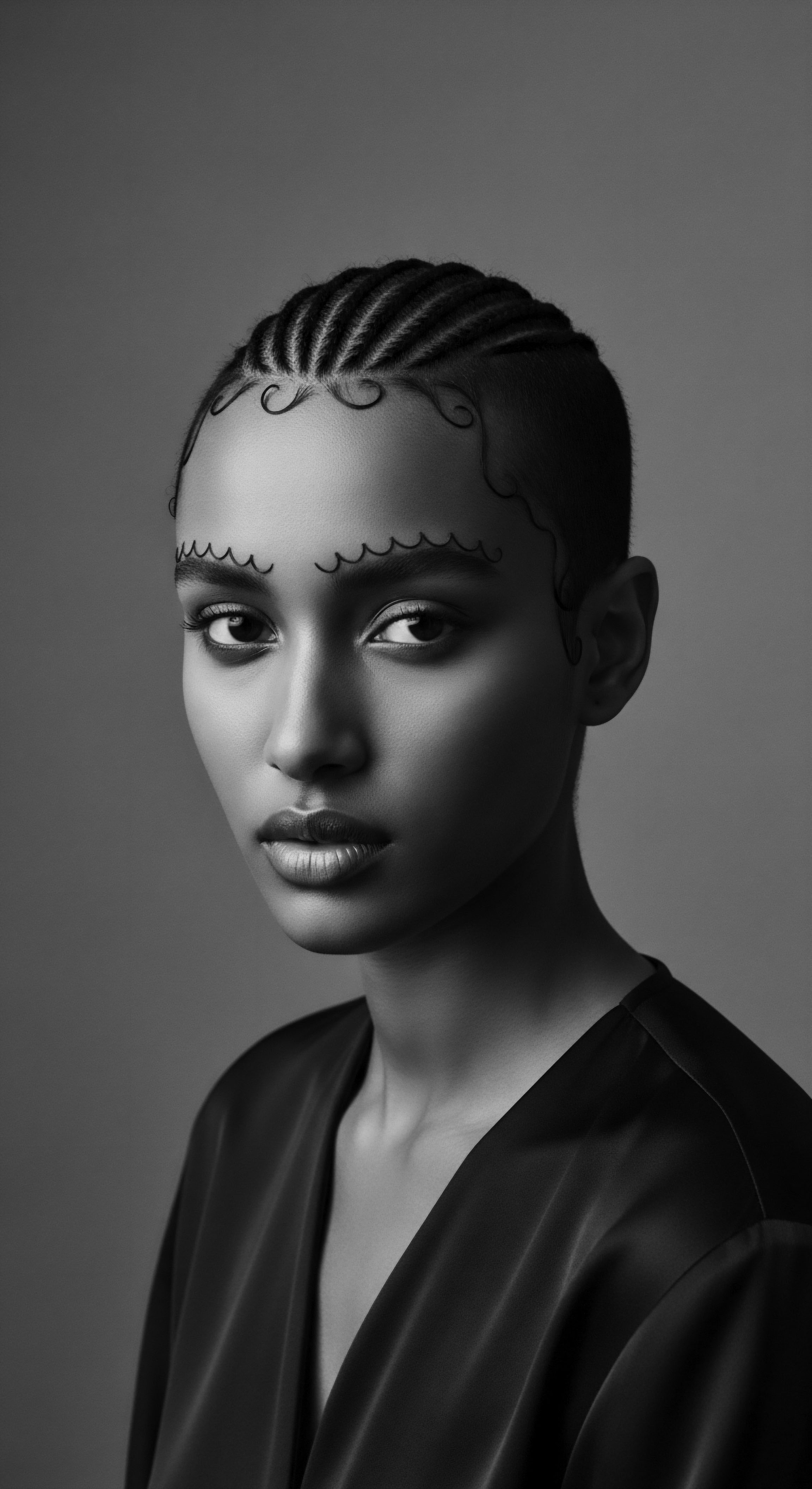
The Hair’s Intricate Architecture
Beneath the surface, the story of textured hair begins with its unique biological blueprint. Unlike straight strands, which often possess a circular cross-section, hair with a coil or wave shape typically displays an elliptical or even flat cross-section. This unique shape, coupled with an uneven distribution of keratin within the hair shaft, encourages the hair to bend and twist, forming its characteristic curl pattern. This inherent structure also means that the outer layer, the cuticle, may not lie as flat as on straight hair, which can contribute to its tendency to feel dry and appear less shiny.
Yet, this very architecture is a marvel of evolutionary adaptation, a design that responds to diverse climates and serves the many intricate styles and adornments historically practiced across African societies. Early peoples understood this innate character not through microscopy, but through observation, through touch, and through the development of care rituals that honored its distinct needs.
Textured hair, a testament to ancestral adaptation, possesses a unique elliptical structure that fosters its characteristic coils and waves.

Anatomy and Ancestral Insights
The human understanding of hair, while now aided by sophisticated scientific tools, has deep roots in ancestral observation. Ancient African communities, for instance, instinctively knew the importance of the scalp’s health, recognizing it as the life source for healthy hair. They understood that a nourished scalp, free from irritation, would yield strong, pliable strands capable of holding the complex patterns that conveyed social standing or tribal identity (The Kurl Kitchen, 2024). The protective nature of many traditional styles, from elaborate cornrows to artful Bantu knots, intuitively shielded the scalp and hair from environmental elements.
This pragmatic approach, born of generations of lived experience, parallels our modern scientific understanding of scalp microbiome balance and cuticle integrity. The wisdom of these forebears saw hair not as a mere adornment, but as an extension of the self, deeply linked to well-being and community.
Follicle Shape dictates the curl pattern; a flatter follicle generates tighter coils. The Sebum produced by scalp glands, a natural conditioner, has a more difficult journey traversing a coiled strand, which contributes to the hair’s need for external moisture. The Protein Structure within each strand gives textured hair its incredible strength, despite its perceived fragility when dry. These biological truths, though articulated differently, underpinned the ancestral practices of oiling, sealing, and communal grooming that sustained hair health for centuries.

The Language of Hair ❉ Classifying a Legacy
The way we categorize textured hair today, particularly the numerical and alphabetical systems, has a relatively recent origin. These systems, while providing a common framework for product development and communication, often stand in contrast to older, more descriptive, and culturally embedded vocabularies. For millennia, hair was described not by a number, but by its appearance, its feel, its cultural purpose, or its association with specific communities or lineages.

Do Modern Hair Typing Systems Diminish Heritage?
The popular hair typing system, classifying curls from 3A to 4C, while widespread in digital hair communities, does not fully convey the vast spectrum of textures and stories within Black and mixed-race heritage. This system, born largely from commercial needs, can inadvertently reduce hair to a mere numerical designation, potentially overlooking the diverse traditions and meanings that hair held. For instance, ancestral communities might have spoken of hair as “river coils,” “mountain spirals,” or “sun-kissed waves,” descriptors rich with metaphor and connection to the natural world. These older terminologies held a sense of reverence for the hair’s unique character, often linking it to specific ancestral origins or cultural practices.
- Kuba Plaits ❉ Referring to intricate, symmetrical designs, often seen in the Kuba Kingdom of Central Africa, signifying wisdom and status.
- Fulani Spirals ❉ Evoking the distinct styles of the Fulani people, often featuring a central braid, side braids, and adornments.
- Zulu Knots ❉ Representing the tightly coiled and often elevated styles characteristic of Zulu women, symbolizing marital status or cultural pride.
- Ashanti Spirals ❉ Describing the softer, more undulating textures often associated with people of Ashanti descent.
Digital spaces, while popularizing the modern typing systems, also serve as powerful platforms where these older, heritage-rich terms are being rediscovered and championed. Communities online share images and stories, linking contemporary styles back to their historical names and cultural origins, thereby enriching the current lexicon and reclaiming ancestral descriptors. This online dialogue creates a living dictionary, one that respects both the science of today and the profound heritage of yesterday.
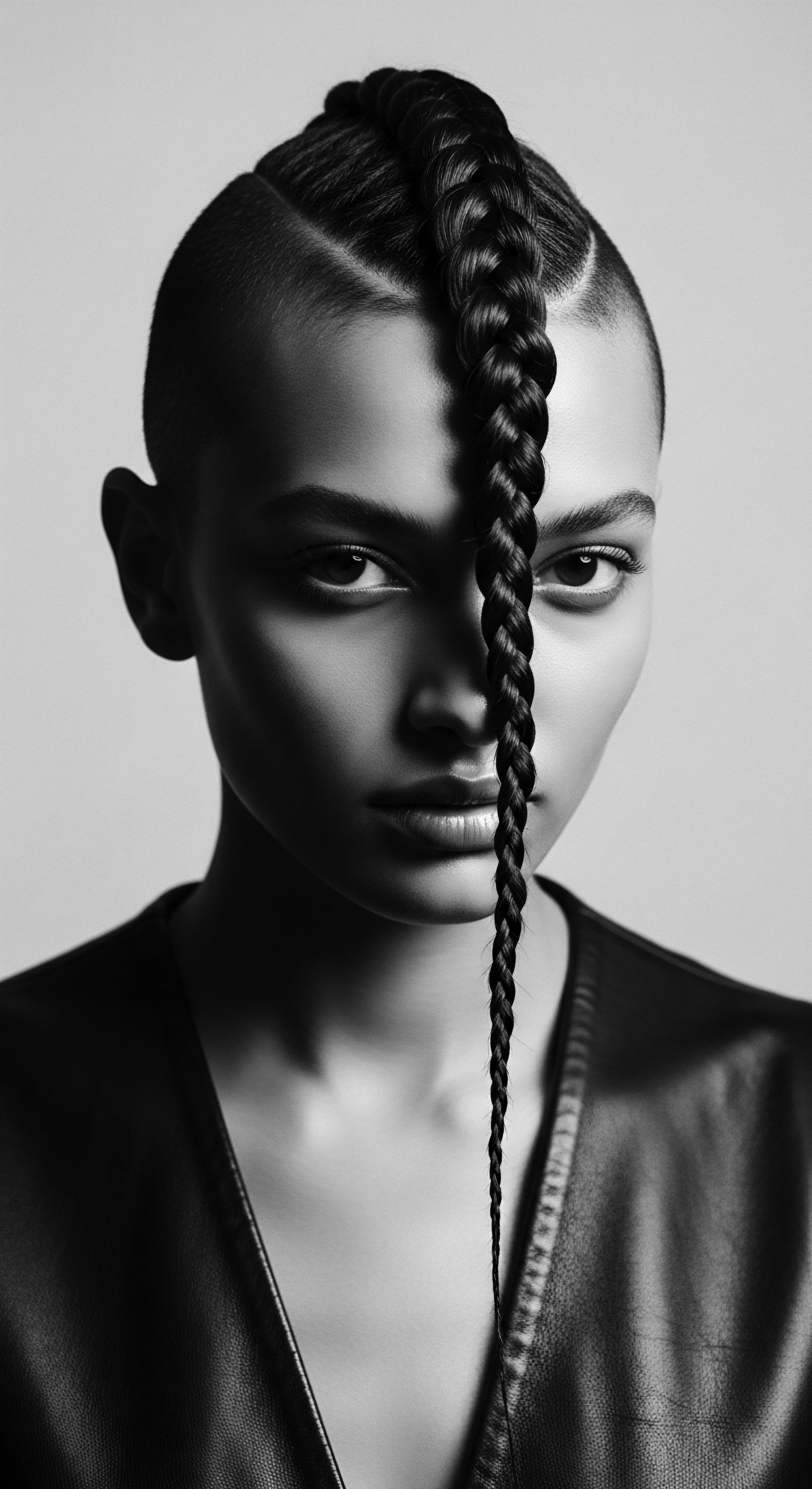
Growth Cycles and Environmental Echoes
The journey of a single hair, from its emergence to its eventual shedding, is a cycle of renewal that has always been influenced by both internal biology and external conditions. Ancestral wisdom often recognized the seasonal variations in hair health, understanding that factors like diet, climate, and overall well-being played a considerable role in hair vitality. Modern science confirms this, detailing the three phases of hair growth—anagen (growth), catagen (transition), and telogen (rest)—and the influence of nutrition, stress, and environmental stressors.
Historically, communities with textured hair lived in climates that often necessitated protective styling and moisturizing practices to shield hair from harsh sun, dust, or dry air. The ingredients utilized in ancestral hair care were often indigenous to their regions, offering natural remedies and preventative measures for common hair concerns. These were not random concoctions, but carefully passed-down recipes refined over generations, a testament to deep, empirical understanding.
| Aspect Dietary Influence |
| Ancestral Understanding Emphasis on local, nutrient-dense foods for bodily strength, which implicitly supported hair health. |
| Modern Scientific Link Specific vitamins (biotin, vitamin D) and minerals (iron, zinc) are recognized as essential for follicle health and growth. |
| Aspect Environmental Protection |
| Ancestral Understanding Use of head wraps, braids, and oils to shield hair from sun, dust, and arid conditions. |
| Modern Scientific Link UV protection, pollution barriers, and moisture retention are key components of contemporary hair defense strategies. |
| Aspect Scalp Vitality |
| Ancestral Understanding Massage with traditional oils to promote "flow" and health to the roots. |
| Modern Scientific Link Improved blood circulation to the scalp and antimicrobial properties of certain oils support a healthy scalp microbiome. |
| Aspect The enduring wisdom of ancestral practices often aligns with current scientific discovery, validating long-held approaches to hair well-being. |
Digital spaces have now made it possible for these localized, ancestral practices to find global resonance. A woman in Lagos can share her great-grandmother’s recipe for an herbal rinse, and a hairstylist in London can offer a scientific explanation for its efficacy, bridging continents and centuries of knowledge. This intersection creates a powerful collective memory, ensuring that the foundational understanding of textured hair, from its intrinsic biology to its deepest heritage, continues to evolve and instruct.

Ritual
The artistry of textured hair styling is a profound ritual, a dance between hands and strands that has shaped identity and conveyed stories for millennia. From the earliest communal gatherings where fingers deftly sculpted intricate designs, to the quiet solitude of personal grooming, each act of styling carries the weight of tradition and the whisper of innovation. In today’s digital world, these rituals, once confined to homesteads and local salons, now unfold on a global stage, influencing acceptance and reinforcing cultural belonging through the heritage of adorned hair. The interplay between ancient methods and contemporary adaptations is a testament to the enduring power of creative expression.

Adornment Through Generations
Long before the advent of chemical straighteners or modern styling tools, the manipulation of textured hair into protective and ceremonial styles was a deeply embedded practice across African societies. These styles were not merely aesthetic choices; they were living expressions of social hierarchy, marital status, age, wealth, and even spiritual beliefs. The very act of braiding or coiling was often a communal activity, a time for storytelling, bonding, and the transmission of knowledge from elder to youth. This collective endeavor reinforced identity and forged strong community ties.
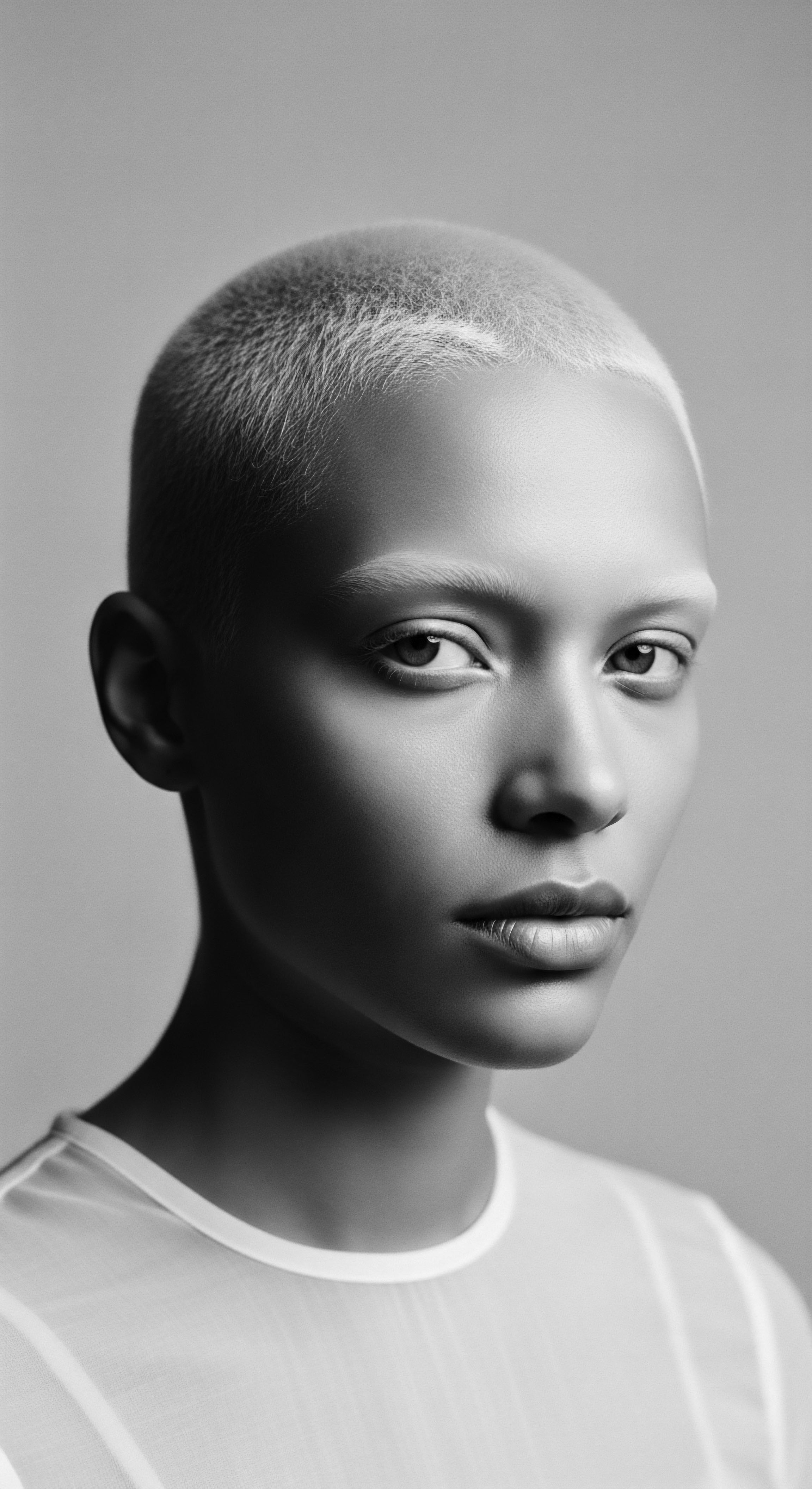
How Do Digital Platforms Reclaim Ancient Styling Narratives?
Digital platforms now act as expansive repositories for the re-documentation and celebration of these ancient styling narratives. Images of historical hairstyles, once confined to museum archives or scholarly texts, now circulate widely, inspiring a renewed appreciation for their original meanings and technical complexity. Consider the enduring legacy of the cornrow , a style with roots dating back to 3000 BCE in the Sahara desert (Odele Beauty, 2024). During the transatlantic slave trade, enslaved Africans ingeniously adapted this ancient art form into a clandestine tool for survival.
They braided patterns into their hair that served as maps, indicating escape routes through plantations and landscapes (Beds SU, 2022; Odele Beauty, 2024). Seeds and even gold nuggets were hidden within these tight, close-to-the-scalp designs, providing sustenance and currency for those seeking freedom (The Afro Curly Hair Coach, 2022). This profound historical example of hair as both a symbol of identity and a literal means of resistance against unimaginable oppression finds new life in digital spaces. Online historians, vloggers, and artists share detailed explorations of this heritage, ensuring its lessons are not forgotten, but actively integrated into contemporary understanding.
Ancient cornrow styles, once covert maps for enslaved Africans seeking freedom, now serve as powerful digital symbols of resistance and ingenuity.
The sharing of these stories, alongside tutorials for re-creating historical styles, means that modern wearers connect to a lineage of remarkable creativity and resilience. This dynamic interplay between past and present allows textured hair to stand as a vibrant symbol of cultural continuity.

Protective Styling as Inherited Wisdom
Protective styles, which minimize manipulation of the hair, shield it from environmental damage, and promote length retention, are cornerstones of textured hair care. This approach has its roots in ancestral practices, long predating commercial hair products. Women across African civilizations recognized the wisdom of braiding, twisting, and coiling hair away, preserving its health and minimizing breakage. These were not simply transient fashions, but practical solutions born of deep understanding of hair’s needs in specific climates and lifestyles.
Today, the concept of protective styling is undergoing a resurgence, fueled in large part by digital communities. Online forums, social media groups, and video channels provide a rich exchange of knowledge, enabling individuals to learn a myriad of techniques, from classic braids to modern faux locs. This shared knowledge strengthens the acceptance of textured hair in its many forms and empowers individuals to care for it in ways that honor its unique characteristics.
- Bantu Knots ❉ Small, coiled buns secured close to the scalp, originally from Southern Africa, used for protecting ends and creating curl definition.
- Sisterlocks ❉ A precise system of micro-interlocking hair, reflecting a modern evolution of traditional locking practices, offering versatility and freedom.
- Knotless Braids ❉ A contemporary braiding method that begins with the hair’s natural root, reducing tension and preserving the hairline, building upon traditional braiding techniques.
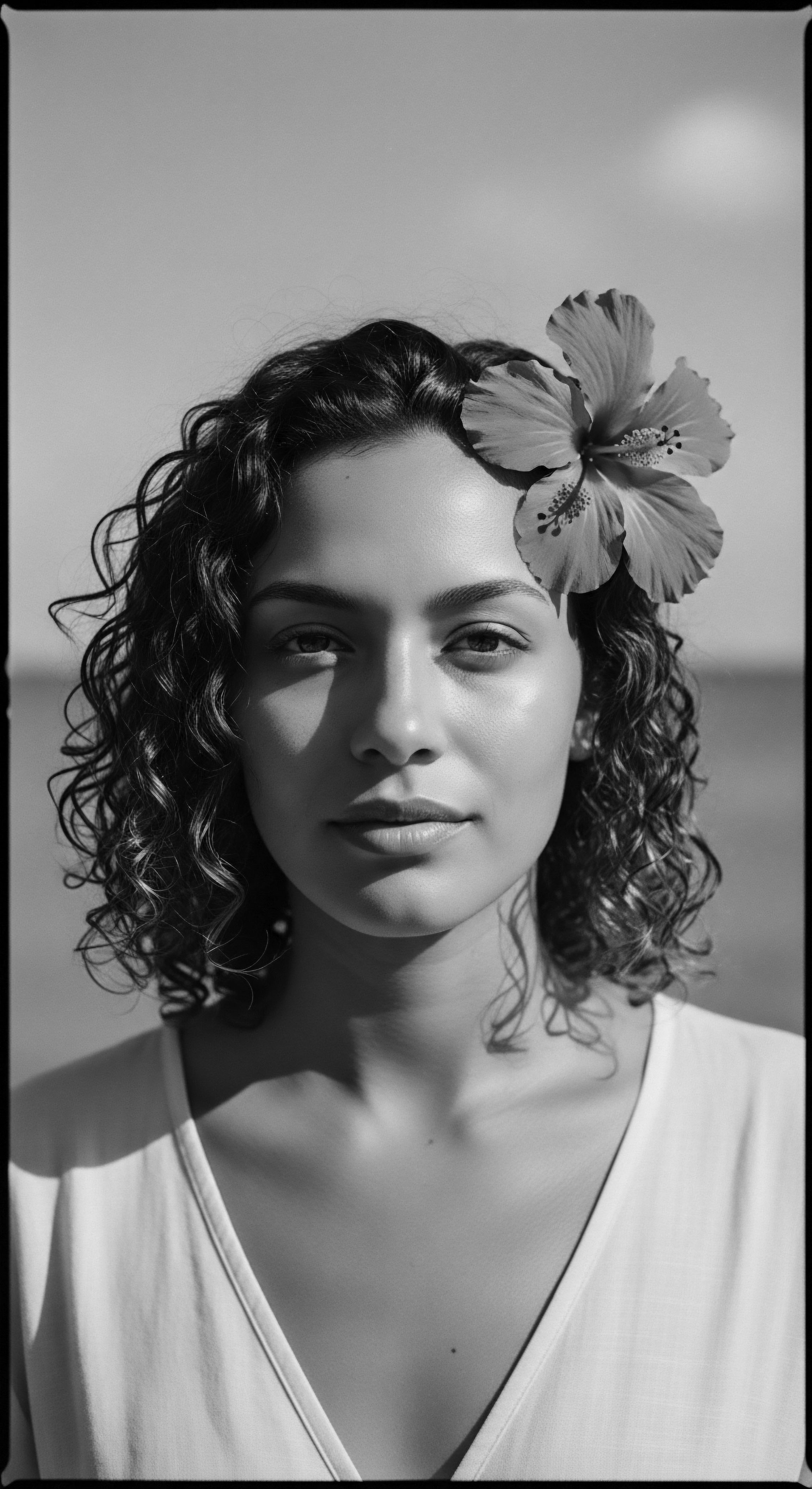
Tools and Transformations
The instruments used in textured hair styling have evolved considerably, yet their fundamental purpose remains rooted in enhancing and preserving the hair’s inherent beauty. From the handcrafted combs of antiquity to the specialized brushes and heat tools of the present day, each item tells a story of adaptation and ingenuity.
In many ancestral communities, tools were often crafted from natural materials – wood, bone, or horn – and were considered sacred, sometimes passed down through families. These tools were designed to gently detangle, part, and adorn hair without causing stress. The ritual of hair grooming, aided by these tools, was a time of connection and care, deeply tied to the well-being of the individual and the community.
| Tool Category Combs |
| Ancestral Example / Use Elaborate wooden or bone combs, used for parting, detangling, and as adornment, sometimes symbolizing status. |
| Modern Digital Impact Digital content showcases ergonomically designed wide-tooth combs and detangling brushes, often drawing inspiration from traditional forms. |
| Tool Category Hair Pins / Adornments |
| Ancestral Example / Use Cowrie shells, beads, precious metals woven into hair, signifying wealth, marital status, or spiritual beliefs. |
| Modern Digital Impact Online marketplaces connect artisans globally, offering contemporary versions of traditional hair jewelry and accessories, spreading their historical context. |
| Tool Category Heating Elements |
| Ancestral Example / Use Heated stones or natural elements (e.g. specific leaves or roots warmed) for light shaping or setting. |
| Modern Digital Impact Digital tutorials educate on safe heat styling practices, comparing modern flat irons to the historical hot comb and discussing its impact on hair health. |
| Tool Category The digital era has transformed access to styling knowledge, preserving ancient wisdom while introducing new techniques and tools. |
The rise of heat styling, particularly the hot comb, in the late 19th and early 20th centuries, marked a significant shift in textured hair practices (African American Museum of Iowa, 2024). While it offered a means for Black women to align with prevailing Eurocentric beauty standards and provided economic opportunity for entrepreneurs like Madam C.J. Walker, it also introduced practices that could compromise hair health if not executed with care.
Digital spaces today provide platforms for education on safe heat application, contrasting it with the gentle, protective principles that underpinned much of traditional hair care. This online discourse encourages a balanced perspective, acknowledging historical influences while prioritizing hair health and affirming a broad spectrum of styling choices that reflect individual identity and collective heritage.
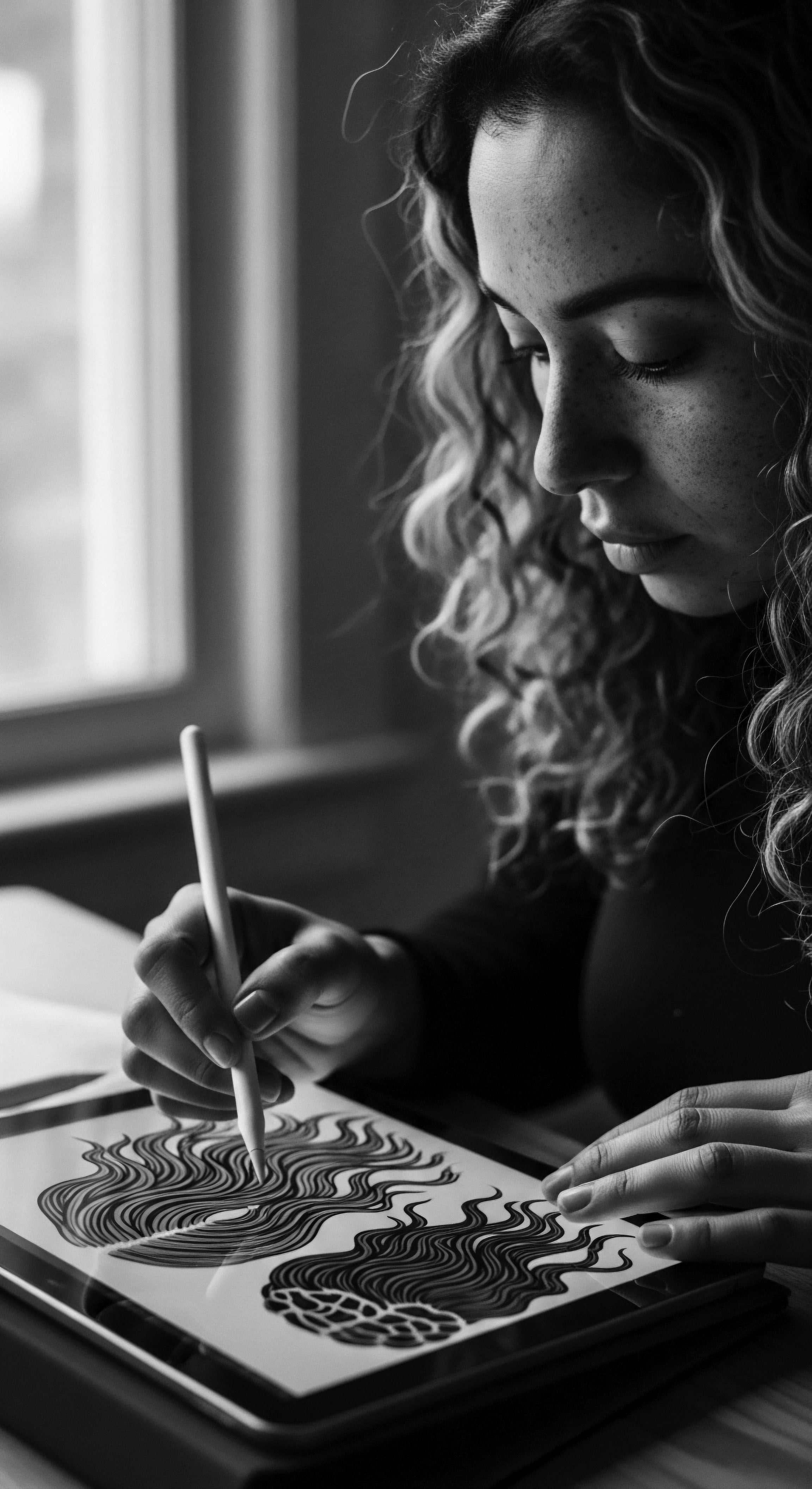
Relay
The regimen of radiance for textured hair is more than a sequence of product applications; it is a continuity of care, a living tradition passed down, adapting through time while retaining its core wisdom. From ancient African villages where hair care was a collective act steeped in natural elements, to the modern home where digital screens now guide choices, this journey of self-care remains a powerful link to ancestral knowledge. The insights gleaned from generations of practice, validated by contemporary understanding, find new pathways for dissemination and acceptance in our interconnected world, reinforcing textured hair identity through its enduring heritage.

Crafting Personalized Rituals
Building a regimen for textured hair has always been a deeply personal undertaking, yet one often shaped by collective wisdom. Ancestral communities relied on shared knowledge, passed from mother to daughter, elder to youth, creating a localized expertise in selecting and utilizing botanicals, oils, and methods that worked best for their specific hair types and environments. This wisdom was empirically derived, refined over centuries of observation and practical application.
In today’s digital landscape, this tradition of personalized care is amplified. Individuals access a vast reservoir of information, from scientific breakdowns of hair protein structures to testimonials about ancient remedies. This accessibility empowers people to custom-build regimens that honor their unique hair needs while drawing upon a global heritage of care. The internet allows for an unparalleled exchange, where a practice from the Yoruba people concerning specific herbs can inform a regimen in the diaspora, linking past to present through shared wisdom.

How Does Digital Knowledge Transform Traditional Care?
Digital knowledge transforms traditional care by democratizing access to information that was once geographically or culturally confined. For generations, the detailed understanding of specific plants, oils, or preparation methods for hair care was held within families or small communities. Now, resources like online databases, scientific papers, and cultural heritage sites provide details on, for instance, the composition of chebe powder , traditionally used by Chadian Basara women for hair strength, or the properties of shea butter , a staple across West Africa for moisturizing and sealing. This digital translation of oral and empirical knowledge allows individuals to connect scientific understanding with time-honored practices.
It moves the discussion beyond anecdotal evidence, grounding the efficacy of ancestral methods in contemporary biological and chemical understanding, thus strengthening their credibility and encouraging wider acceptance of heritage practices (Roseborough & McMichael, 2009). The profound personal stories shared digitally, detailing success with these traditional methods, reinforce confidence and belonging within a collective heritage.
This blending of knowledge helps to solidify the belief that textured hair is not a problem to be solved with harsh chemicals, but a unique form of beauty to be nourished with respect and intention.

The Nighttime Sanctuary ❉ Bonnet Wisdom and Sleep Protection
The ritual of protecting textured hair during sleep is a practice steeped in historical necessity and cultural wisdom. For centuries, head coverings were not only a symbol of modesty or status but also a practical means of preserving intricate hairstyles, maintaining moisture, and shielding delicate strands from friction and environmental elements. The tradition of tying hair down, wrapping it, or covering it before rest is a common thread that runs through many cultures with textured hair.
Nighttime hair protection, a time-honored ritual, preserves textured hair and links modern care to ancestral practices.
The bonnet, in its modern iteration, stands as a direct descendant of these ancestral head coverings. Its purpose today remains consistent ❉ to minimize tangling, reduce moisture loss, and protect the hair’s delicate structure from the rigors of sleep. Digital platforms have played a significant role in popularizing bonnet use, educating newcomers about their benefits, and showcasing the wide array of styles and materials available. This online conversation has helped transform a practical necessity into a celebrated aspect of textured hair care, connecting a contemporary product to a rich lineage of hair preservation.
- Silk Wraps ❉ Historically used to smooth hair and maintain styles for royalty or ceremonial purposes, preventing breakage.
- Cotton Scarves ❉ More common for daily protection or warmth in many communities, offering a simpler, breathable covering.
- Satin-Lined Bonnets ❉ A modern innovation, marrying the benefits of smooth fabric with convenience, building on ancestral knowledge of gentle materials.
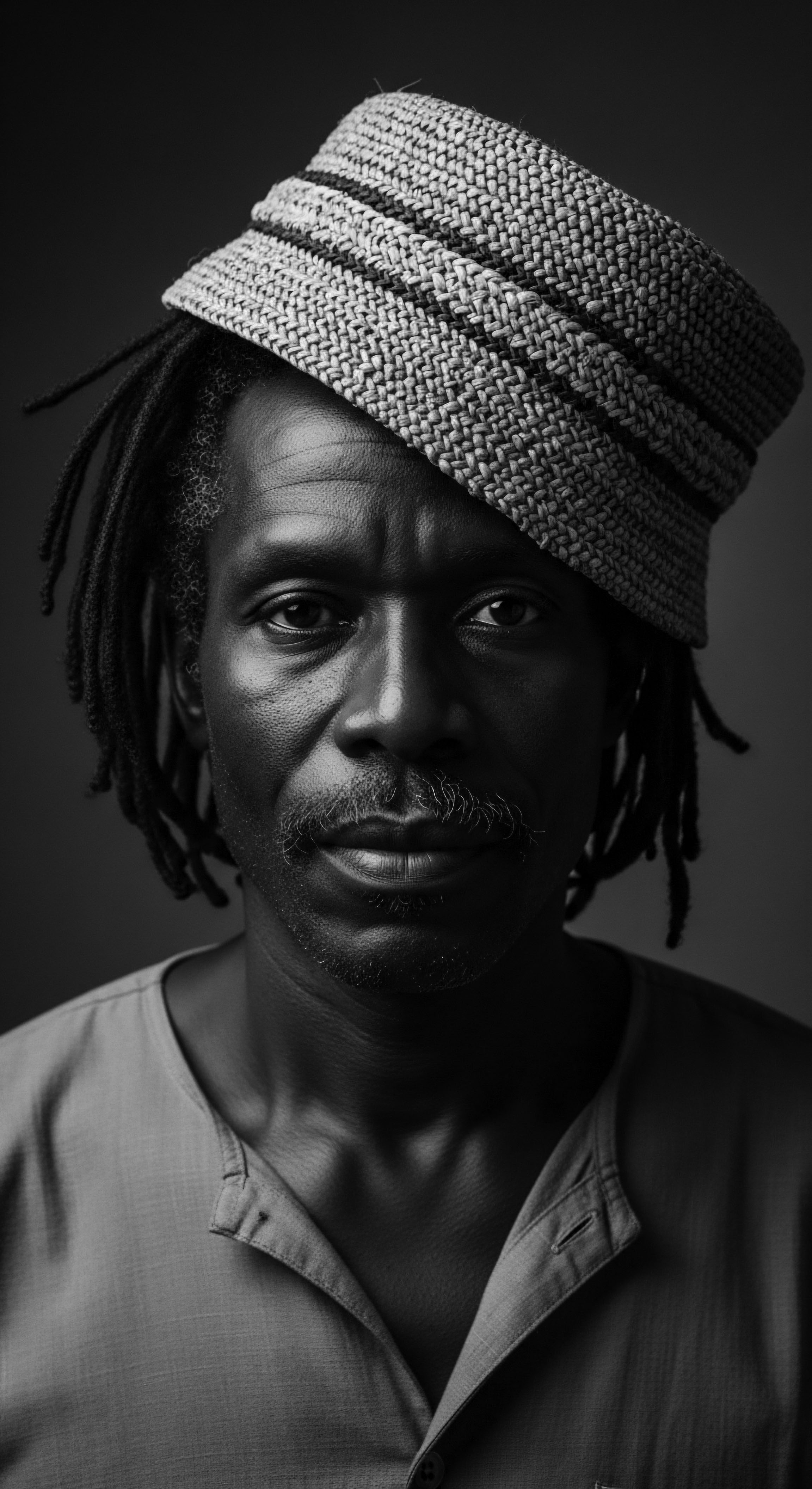
Essential Ingredients ❉ From Earth to Elixir
The efficacy of textured hair care rests heavily on the thoughtful selection of ingredients. For generations, communities relied on natural resources readily available in their environments, transforming plants, seeds, and oils into potent elixirs for hair health. These traditional ingredients often possess properties that modern science now validates, demonstrating a profound intuitive knowledge of botany and chemistry.
The vast digital pharmacopeia now available to us allows for a deep appreciation of these heritage ingredients. Users can research the molecular composition of oils, trace the origins of specific plants, and compare traditional uses with contemporary applications. This transparent approach aids in selecting products that align with both scientific understanding and cultural practices.
| Ingredient Shea Butter |
| Traditional Use in Heritage Moisturizing skin and hair, protecting from sun, traditionally harvested and processed in West African communities. |
| Modern Scientific Benefit Rich in fatty acids (oleic, stearic), vitamins A and E; provides emollients and forms a protective barrier to reduce moisture loss. |
| Ingredient Coconut Oil |
| Traditional Use in Heritage Conditioning hair, promoting strength, used across tropical regions for centuries. |
| Modern Scientific Benefit Contains lauric acid, which penetrates the hair shaft more effectively than other oils, reducing protein loss (Rele & Mohile, 2017). |
| Ingredient Aloe Vera |
| Traditional Use in Heritage Soothing scalp irritation, conditioning hair, used in ancient Egypt and various African communities for its calming properties. |
| Modern Scientific Benefit Anti-inflammatory enzymes, amino acids, and vitamins soothe scalp, promote healthy growth, and condition strands. |
| Ingredient The enduring utility of traditional ingredients finds scientific affirmation, bridging historical wisdom with contemporary understanding. |
The “for us, by us” movement, championed by pioneers like Madam C.J. Walker in the early 20th century, focused on creating products specifically for Black hair needs (ELLE, 2022). This ethos finds a strong resonance in digital spaces today, where Black-owned brands and content creators emphasize traditional ingredients and culturally sensitive formulations. This online ecosystem fosters not only economic growth within the community but also a deeper connection to the heritage of self-sufficiency and bespoke care.
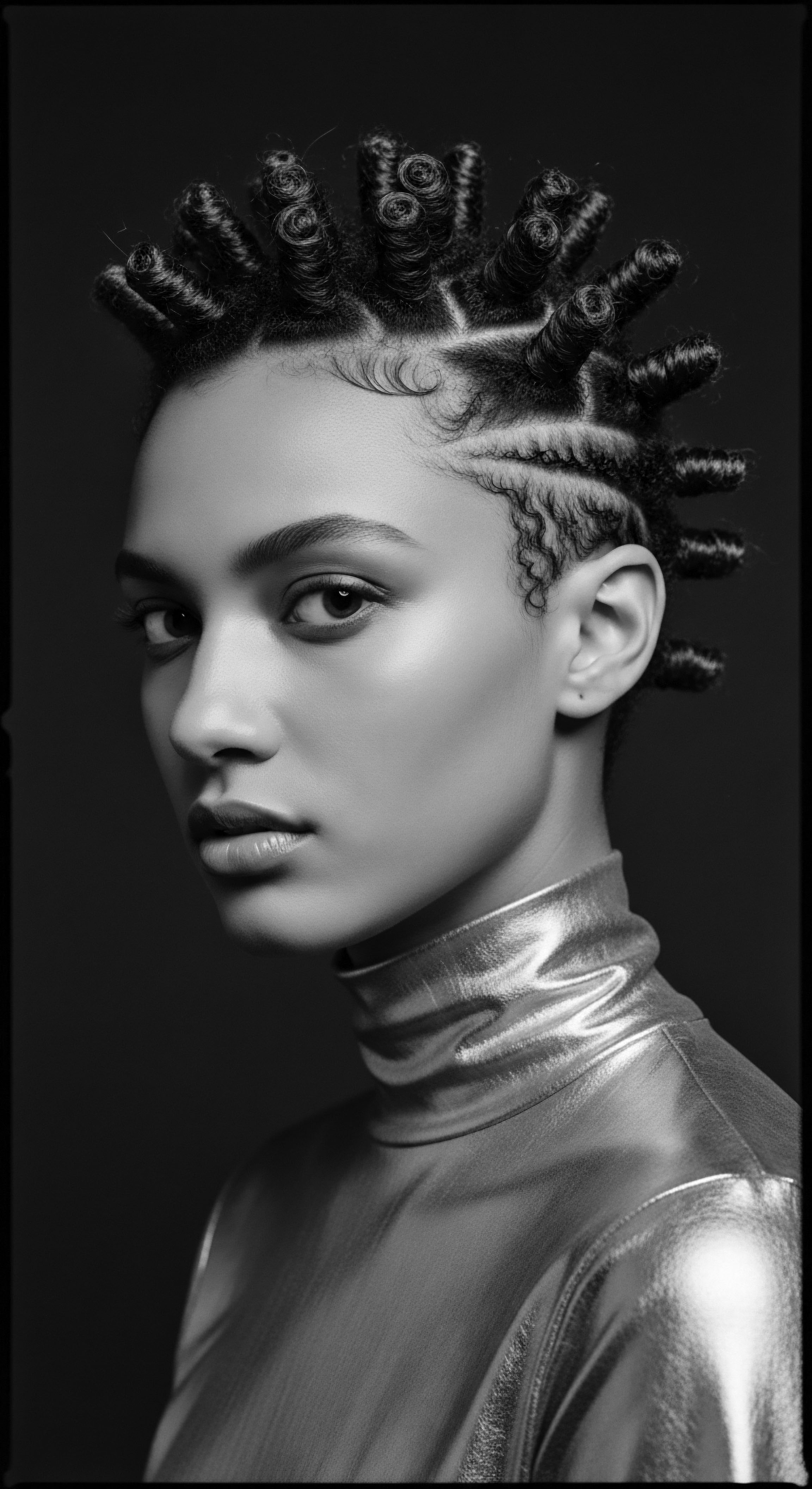
Relay
The exploration of textured hair’s acceptance and identity in digital spaces is a journey that reveals not only the profound adaptability of cultural practices but also the unwavering power of collective voice. This is a complex interplay of historical narratives, scientific illumination, and the lived experiences of individuals navigating a world where their coils and waves have long been scrutinized. Digital realms serve as both a mirror, reflecting persistent challenges, and a forge, shaping new definitions of beauty and belonging, all rooted in the enduring heritage of textured hair.

The Reclaiming of Visual Narratives
For centuries, the visual representation of textured hair in mainstream media was scarce or often depicted in ways that perpetuated stereotypes or promoted Eurocentric beauty ideals. This historical void contributed to a widespread lack of understanding regarding the unique needs and immense versatility of Black and mixed-race hair. It also created an environment where many individuals felt compelled to chemically alter their hair to conform to societal norms.
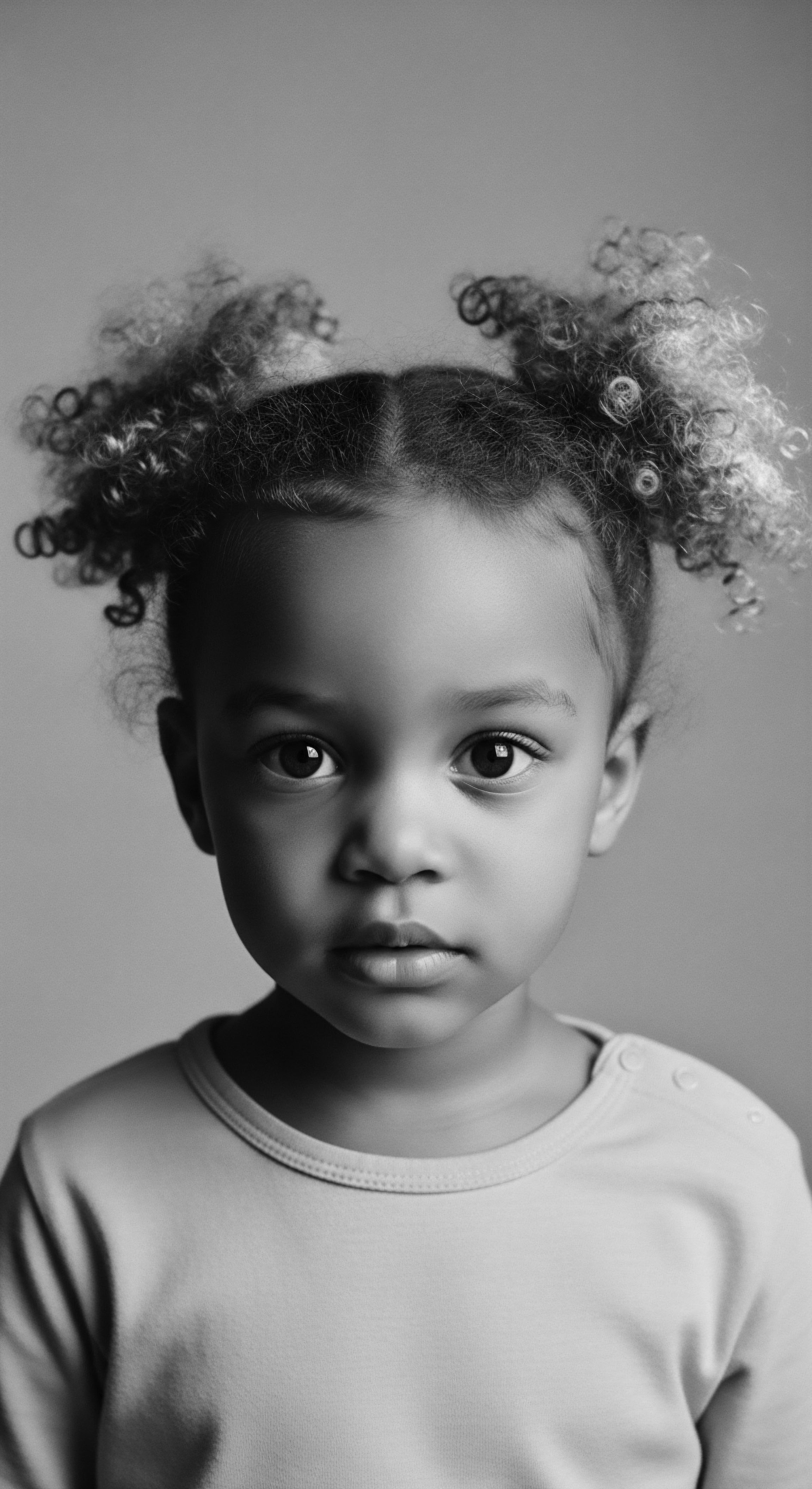
Can Digital Platforms Correct Historical Erasures?
Digital platforms possess an unparalleled capacity to correct these historical erasures by becoming vibrant archives of textured hair’s visual heritage. From meticulously curated Instagram feeds showcasing the splendor of ancient African hairstyles (Mbunyuza-Memani, 2022) to YouTube channels offering detailed tutorials on re-creating traditional braids, the internet serves as a counter-narrative, celebrating every coil and wave. Platforms like Pinterest and Tumblr, with their image-centric design, allowed for a rapid exchange of styling ideas and product recommendations, particularly for the burgeoning natural hair movement (Yes Gurl, 2022). This proliferation of authentic imagery and user-generated content directly challenges the narrow beauty standards that prevailed for so long.
It provides a visual affirmation that empowers individuals to embrace their natural textures, fostering self-acceptance and a deeper connection to their inherited aesthetic. The sheer volume of diverse representations builds a collective visual literacy, educating both those within the community and those outside of it about the inherent beauty and historical depth of textured hair.
Beyond static images, video platforms allow for dynamic demonstrations of hair care and styling techniques, replicating the communal learning experiences that were once central to hair heritage. The ease of sharing these visual narratives has created a global dialogue around textured hair, where individuals from various corners of the diaspora can find inspiration, share challenges, and collectively celebrate their unique heritage.
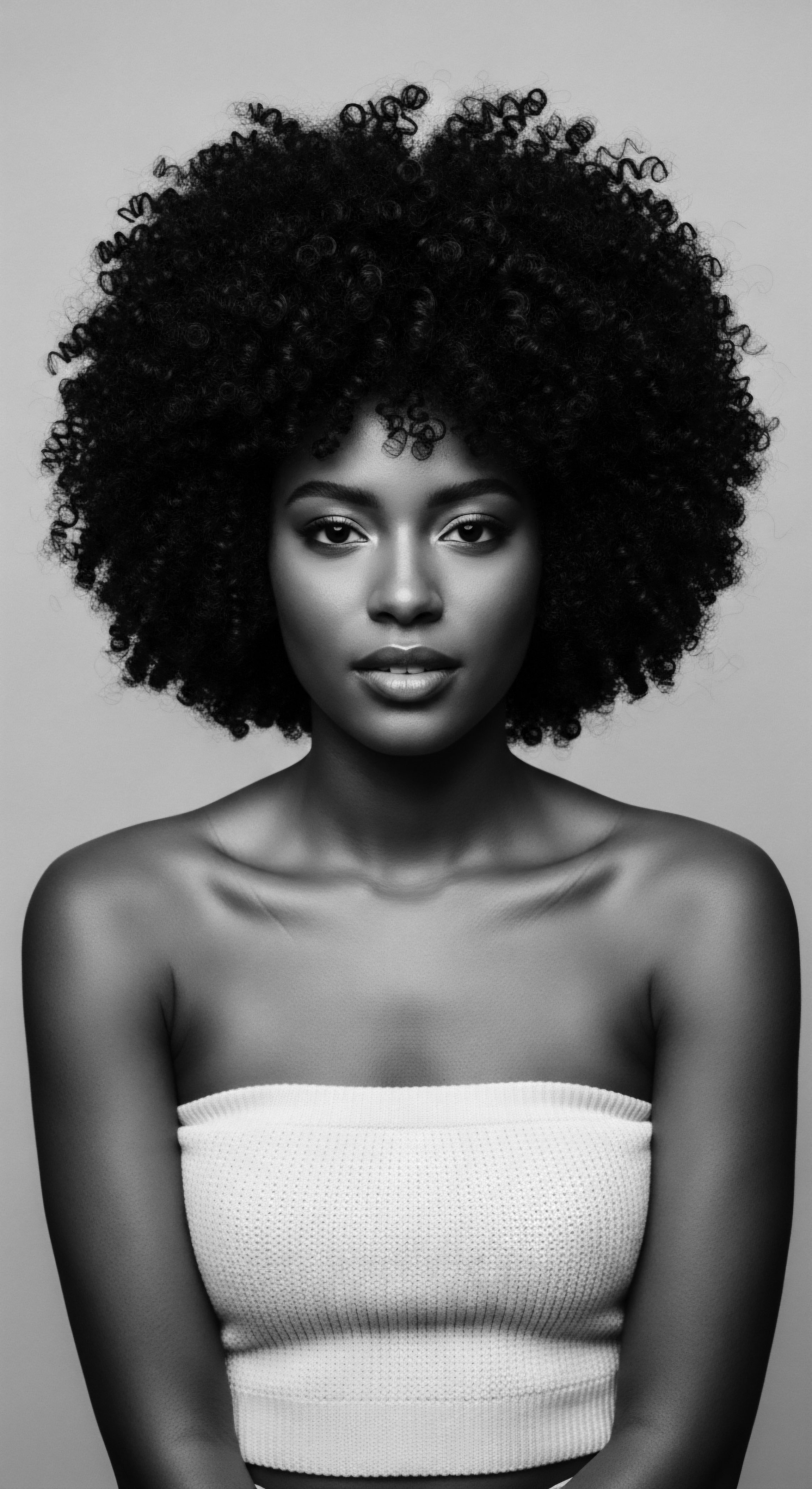
Confronting Discrimination in the Digital Age
Despite the progress spurred by digital advocacy, the legacy of discrimination against textured hair persists. From workplace policies that deem natural styles “unprofessional” to instances of cultural appropriation, the journey toward universal acceptance remains ongoing. Digital spaces, while offering platforms for celebration, also reveal the continued struggle for equity.
However, these platforms also serve as potent tools for collective action and awareness. Stories of hair discrimination, once isolated incidents, now gain rapid traction online, fueling movements for legislative change and fostering a shared sense of solidarity. The CROWN Act (Creating a Respectful and Open World for Natural Hair), a legislative initiative born from a grassroots movement and amplified by digital advocacy, stands as a testament to this power.
It aims to prohibit discrimination based on hair texture and protective hairstyles associated with race. This legislative effort, significantly driven by online voices, demonstrates how digital activism can translate into tangible legal protections, honoring the right to wear one’s natural hair without fear of retribution.

The Entrepreneurial Spirit and Digital Commerce
The historical trajectory of textured hair care has always been intertwined with entrepreneurship, particularly within Black communities. Figures like Madam C.J. Walker built empires by addressing the specific needs of Black women, creating products and training agents who became pillars of economic self-sufficiency (HOLA, 2023). This legacy of “for us, by us” finds renewed vigor in the digital marketplace.
Digital commerce platforms have removed many of the traditional barriers to entry for small businesses, allowing independent creators and heritage-focused brands to reach a global audience. From small batch artisanal oils derived from ancestral recipes to innovative tools designed for specific curl patterns, the online marketplace is a vibrant ecosystem. This enables consumers to support businesses that genuinely understand and respect the heritage of textured hair, fostering economic empowerment within the community.
The direct interaction between consumers and creators in digital spaces also allows for personalized feedback and the rapid development of products that truly meet community needs. This iterative process, fueled by online engagement, ensures that the spirit of innovation, deeply rooted in the historical quest for effective and respectful hair care, continues to flourish.
Digital platforms empower entrepreneurs to bridge ancient hair wisdom with modern commerce, fostering economic growth and cultural continuity.
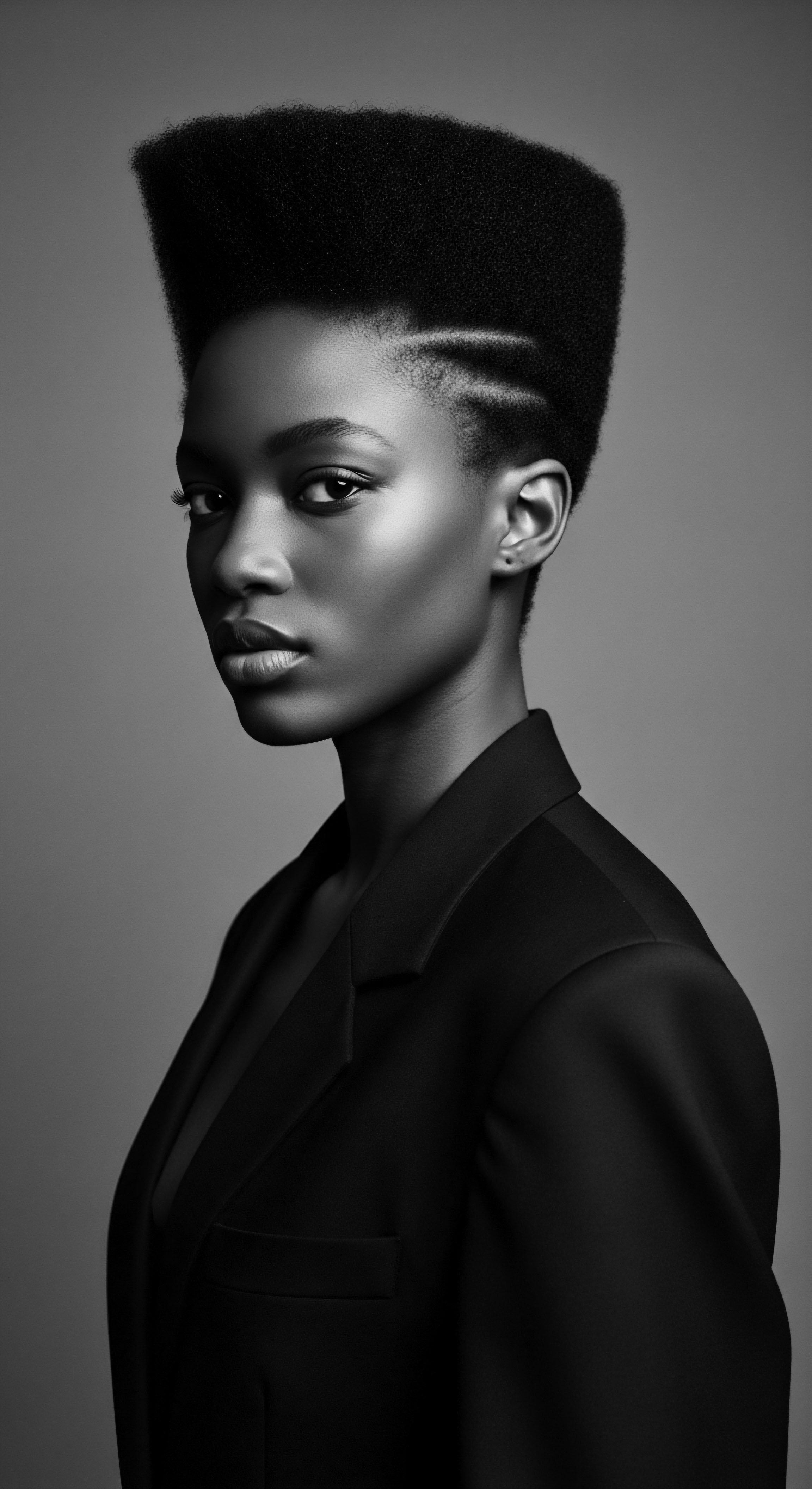
Building Digital Kinship and Shared Identity
Beyond commerce and activism, digital spaces have cultivated a profound sense of kinship among individuals with textured hair. For many, growing up with hair that differed from mainstream ideals could be an isolating experience, lacking visible role models or readily available information. The internet has changed this landscape dramatically.
Online communities—be they dedicated forums, social media groups, or individual content creators—provide a comforting space for sharing experiences, offering advice, and celebrating successes. This digital sisterhood (Mbunyuza-Memani, 2022) transcends geographical boundaries, connecting individuals who might otherwise never meet. It allows for the exchange of not only practical hair care tips but also emotional support, validating shared experiences of acceptance and identity.
This collective support system reinforces the understanding that textured hair is a source of beauty and pride, drawing strength from a shared historical narrative and a vibrant present. The ability to find solidarity online, to see oneself reflected in diverse beauty, contributes significantly to the acceptance and positive identity formation of those with textured hair across the globe.

Reflection
As we draw our exploration to a close, the enduring story of textured hair, its deep heritage, and its intricate connection to digital spaces reveals itself as a vibrant, ever-unfolding saga. From the whispers of ancestral practices, where hair conveyed lineage and status, to the radiant glow of screens showcasing every curl and coil, the journey is one of profound continuity and remarkable adaptation. The “Soul of a Strand” ethos, with its reverence for each individual hair fiber as a keeper of history and a beacon of identity, finds its modern echo in the digital communion of those who cherish their natural textures.
Digital platforms, in their vastness, have become living archives, not merely preserving the past but actively shaping its presence. They hold the echoes of resistance, the warmth of shared ritual, and the sharp clarity of scientific discovery, all coalescing into a more complete understanding of textured hair. The stories of ingenious ancestors who braided maps into their hair, or resilient entrepreneurs who built empires of self-care, are now amplified and reinterpreted for a new generation. This constant flow of information, inspiration, and affirmation ensures that the heritage of textured hair remains a dynamic force, not a static relic.
The quest for acceptance, once a solitary journey for many, now unfolds within a global digital embrace. Individuals find their reflections in countless others, sharing triumphs and navigating challenges with collective strength. This communal spirit, so reminiscent of ancient gathering places, demonstrates that even in the most technologically advanced of eras, the human desire for belonging, for seeing and being seen, persists.
The digital space, when wielded with intention and respect for lineage, becomes a powerful tool for affirmation, helping to sculpt identities that stand tall, rooted deeply in heritage, yet reaching boldly into the future. Each strand, in its glorious uniqueness, continues to tell its powerful story, resonating across time and through every digital ripple.
References
- African American Museum of Iowa. (2024). History of Hair.
- Beds SU. (2022). Black History Month 2022 ❉ The History Behind Cornrows.
- ELLE. (2022). How Madam C.J. Walker’s Legacy Has Fueled My Own Success.
- HOLA. (2023). Madam C.J. Walker ❉ A pioneer in the hair industry.
- The Kurl Kitchen. (2024). The Cultural Significance Of Natural Hair In Different Communities.
- Mbunyuza-Memani, L. (2022). Embracing natural hair ❉ online spaces of self-definition, e-sisterhoods and resistance. Sabinet African Journals.
- Odele Beauty. (2024). A History Lesson On Hair Braiding.
- Roseborough, I. E. & McMichael, A. J. (2009). Hair Care Practices in African-American Patients. Seminars in Cutaneous Medicine and Surgery, 28(2), 103-108.
- The Afro Curly Hair Coach. (2022). Cornrows and The TransAtlantic Slave Trade.
- Yes Gurl. (2022). Black natural hair movement ❉ How it thrived on social media.
